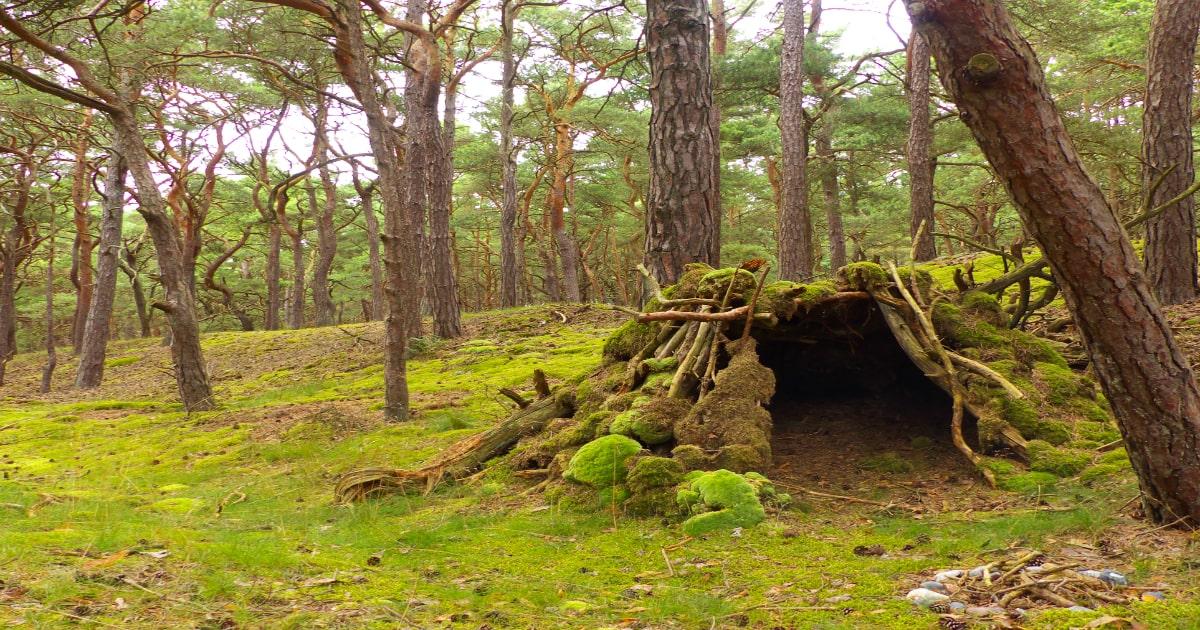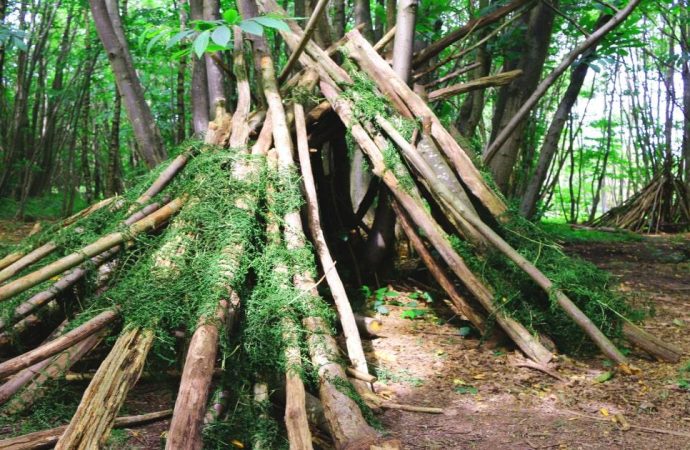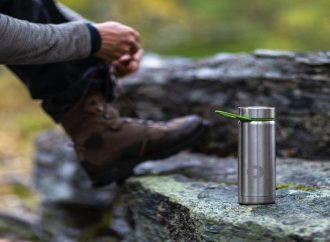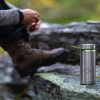Prepping is all about survival, and the earlier you get ready for disaster situations like martial law or a nuclear attack the better. Those bugging in are less likely to require a survival shelter, as they’ll likely set up camp in an established, manmade structure like their home where it is safer, but it’s still
Prepping is all about survival, and the earlier you get ready for disaster situations like martial law or a nuclear attack the better.
Those bugging in are less likely to require a survival shelter, as they’ll likely set up camp in an established, manmade structure like their home where it is safer, but it’s still an essential skill for every prepper to know, just in case.
If you’re looking to bug out, then you face more unique, challenging risks – and the chances of survival are increased 10-fold by being able to assemble a waterproof shelter of some kind.
There are tarp designs for long-term use that can be added onto a tent or a car, and temporary alternatives for building a survival shelter made from simply using survival tarps that’ll serve you well for just a night or two.
Here, we’re going to look at the benefits of building a survival shelter, and how you can use this knowledge to make it another day.
Why You Need A Survival Shelter
Humans only require a few things to get by – air, water, shelter and sustenance, in that order. Food and water can be found by chance or by using your skills, but the responsibility of building a shelter from scratch is entirely down to you.
If you stumble across one that looks half decent, it’s best avoided as it could be in use by someone else, or worse, a trap. If you’re sure it isn’t then take steps to secure the location then start to make it home.
Shelters protect you from the elements, whether that’s the scorching summer sun, radioactive dust in the air caused by an event like a nuclear attack, or of course, that famous British rain.
Exposure is unfortunately one of the leading causes of survivalist deaths, around 100 per year in the UK, as unpredictable weather patterns are hard to endure when there’s no protective measures in place.
Many experts claim building a survival shelter is one of the very first things you should do, as it provides a base camp for you to return to after days of surviving in the dangerous world around you.
The good thing about shelters is that there’s a variety you can assemble, using almost every material you find, both natural and manmade. You can even buy an emergency shelter to have in your bug out bag should you need to deploy it.
Not only is a shelter a great place to stash all of your belongings out of the elements, but it is also mentally beneficial to have somewhere to call home and not be relegated to a completely nomadic life. This is especially true if you have children who need that level of familiarity and stability during uncertain times.
To Prevent Hypothermia
A healthy human body’s internal temperature is 37.5° Celsius, but a mere fractional decrease can lead to huge problems.
On its own, hypothermia is a difficult thing to endure, even with the UK’s NHS professionals by your side – unfortunately, it often leads to much worse health conditions that are even harder to manage.
If left ignored or untreated, you may experience frostbite, gangrene or heart conditions. These can all lead to fatalities, especially in a survival situation – but they can also be easily avoided with a warm shelter and decent winter clothing.
Read our article here to learn more about hypothermia, how to avoid it, and what to do to help someone suffering from it.
To Prevent Heatstroke
At the other end of the spectrum is heatstroke, an unforgiving potentially lethal health condition caused by your body’s internal temperature reaching or exceeding 40° Celsius. Check out this article to find out how to stay cool in warm weather.
The effects of this are also deadly, and affect the brain, heart and kidneys – essential bodily organs. Symptoms include sickness, changes in your mental state, and rashes or sores on the skin. Don’t forget to check your heart rate, too.
There isn’t one specific treatment or medicine to help survive heat stroke – just use your shelter to stay away from sunlight, as the main goal is to reduce your body’s internal temperature back to normal. This will be more achievable during nighttime, sundown, or by entering a body of cool water.
To Camouflage Your Location

When you’re travelling across the UK, you’ll experience different environments, and it’s unlikely you’ve brought an outfit to blend into each. Use your shelter’s surroundings to your advantage by providing coverage and disguise against human risks.
If you’re bugging out in a forest, grab fallen leaves, branches or moss, and put them above and around you – but make sure your shelter can withstand the extra weight, or you’re back to square one.
Antagonists are more likely to attack at night, too, as they’ll assume your guard to be down. However, a shelter is a great mode of protection that generally requires zero effort to maintain after the initial assembly.
A helicopter overhead or even a group walking thorugh the woods not too far away is unlikely to spot you if you’ve constructed your shelter to blend in with the surrounding environment with some camouflaged tarp and camouflage paracord.
Shelter From Winter Conditions
Anyone who’s ever gone to five-a-side in winter and only brought their shorts, will tell you the British winter weather is unpleasant at best. But here, you’re not heading back from time with your mates, you’re stuck in a SHTF survival situation.
Readers bugging out in colder areas, like near the coast or up north, will need to protect against snow, sleet, hail and rain. Not only are these cold and aggressive, but they can cause some serious harm when you’re exposed to it.
A properly built shelter will protect against all of these, but don’t forget to assemble sides of the same quality as the roof. This will help prevent any dripping from water, or leakage from snow that’s settled above you.
Another useful tip is to find somewhere that already has a cover, like treetops or a man-made roof. This essentially doubles the protection against aerial risks from branches or rain falling as well as helicopters.
Protection From British Wildlife
There’s a number of animals native to our isles that can prove dangerous – some you’ll know, some you won’t, and others you never would havve considered a risk. We have things that can cause trouble including mosquitos, false widow spiders, foxes, venemous adders and wasps, and don’t forget angry cows!
Although Britain’s selection of native animals is tame compared to other areas of the world – and if you were prepping in areas like South America or Australia, there’s thousands more risks to consider – it’s still worth staying on top of.
Creating barriers between yourself and Britain’s animal residents is a great way to improve the safety of your body, the security of your possessions, and the quality of your sleep.
Things do indeed go bump in the night – but with a proper shelter, you won’t have anything to worry about.
Summary
As you now know, shelter is an absolute essential for preppers across the globe, with the UK’s survivors being no different. Weather, animals, and other humans will be out to get you, so ensure you’re ready for the worst with a solid structure.
You can opt for a manmade shelter such as finding an abandoned house or building near you, create your own makeshift shelter for long-term survival from natural or manmade materials, choose to buy a decent tent or simply opt for any size of tarp you need for the most basic of protection from the elements.
We believe that you should always have 2-3 options for building a survival shelter as it’s the basis of every other part of survival, and can affect your ability to survive in a major way. Have at least two bug out locations in your vicinity, plus one further afield, one or two tents and a couple of tarps.
It doesn’t necessarily require four walls, depending on where you’re located. Use your environment to your advantage – humans have done it for thousands of years before, and now it’s your turn to survive, you’ve got this!





















